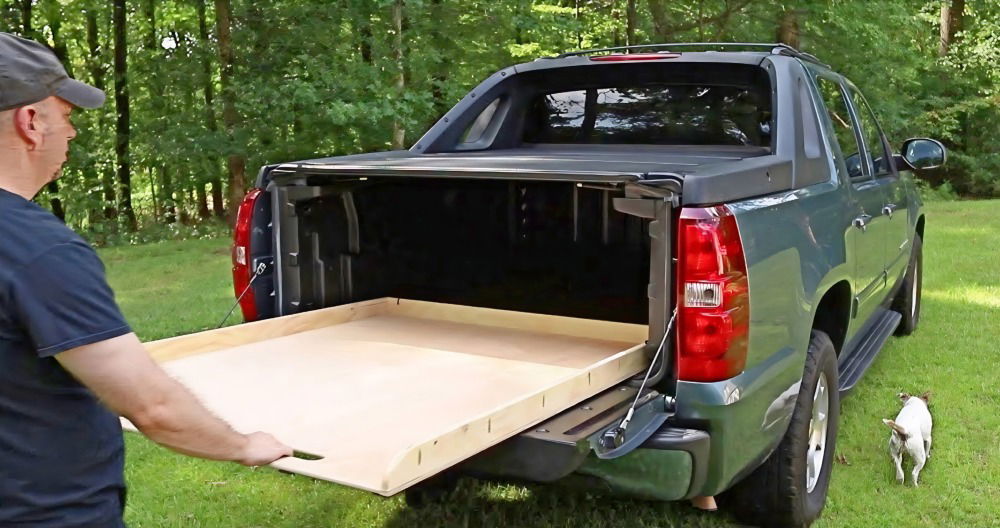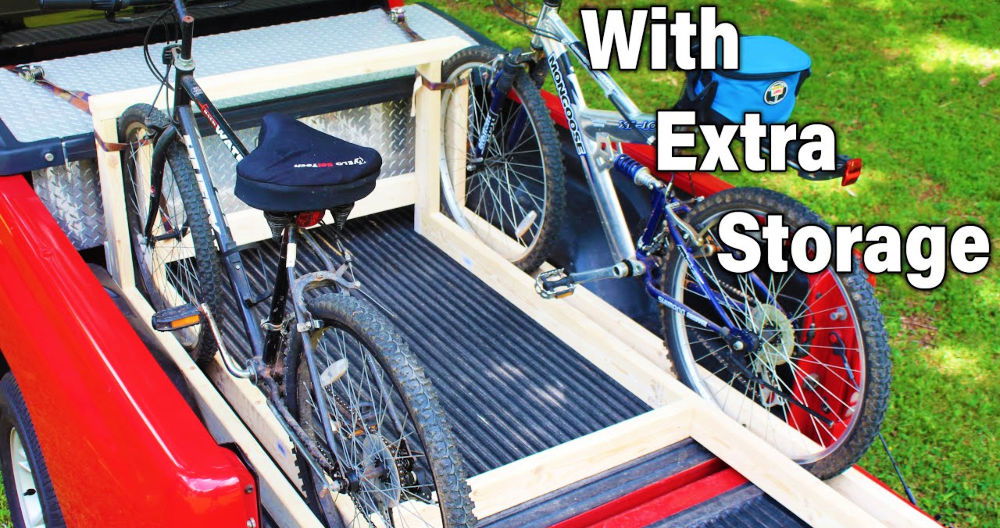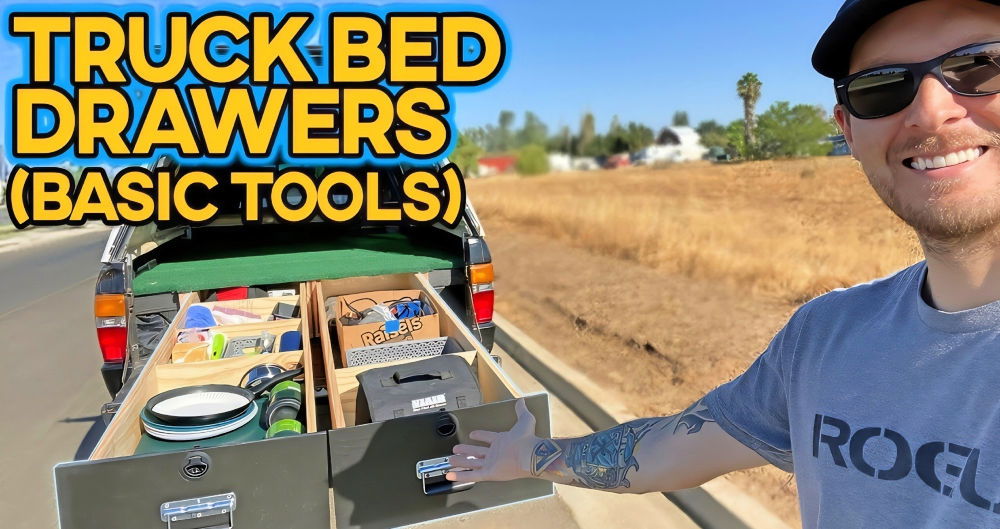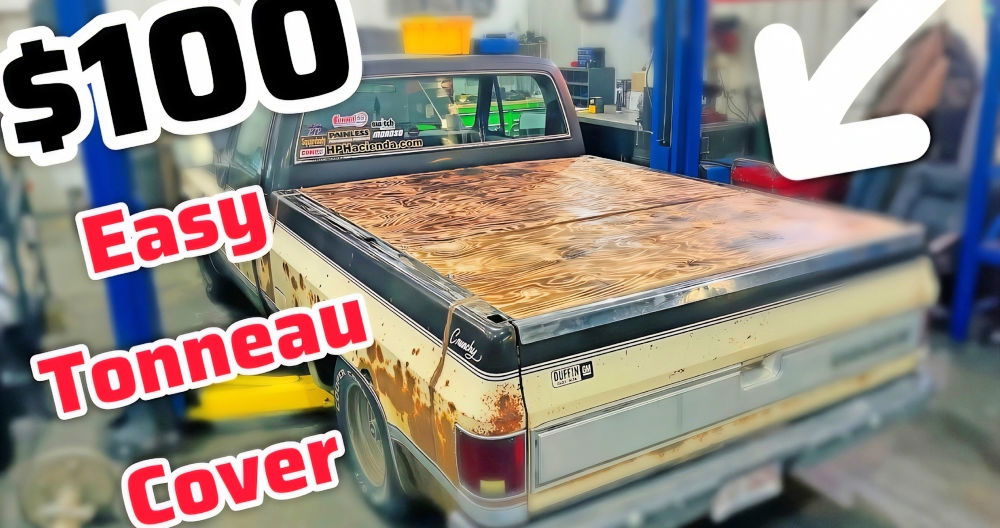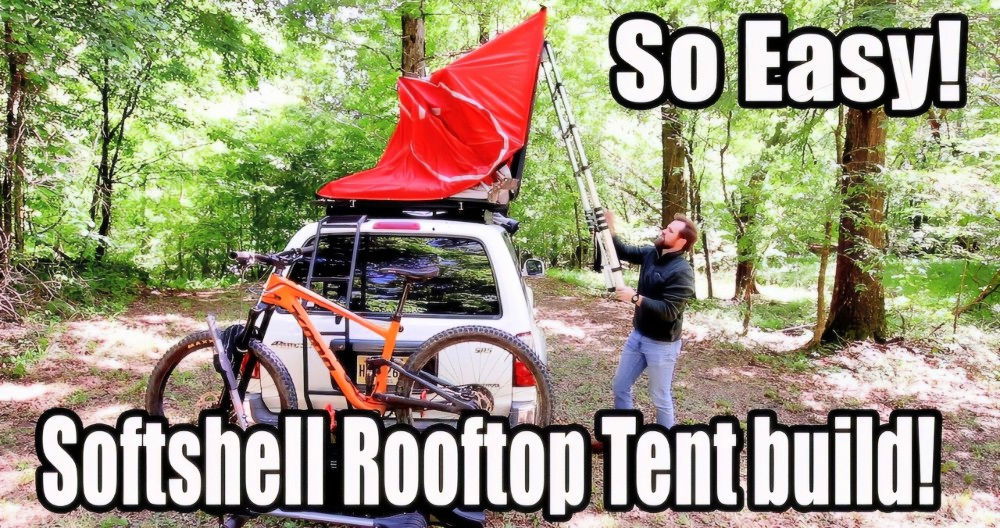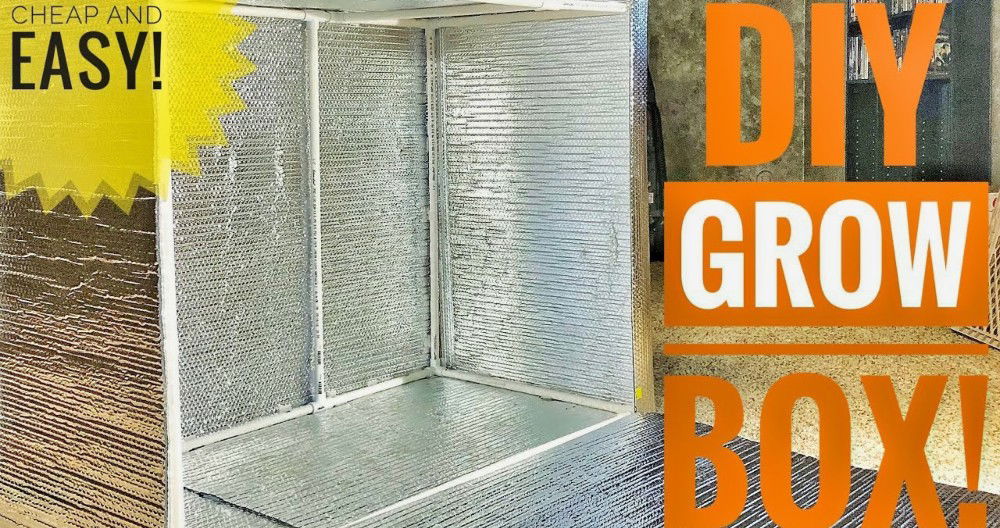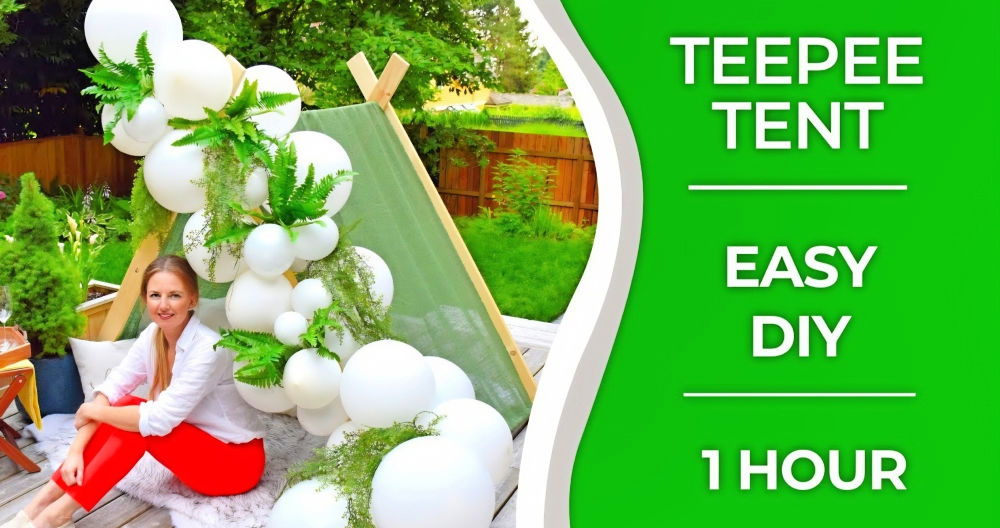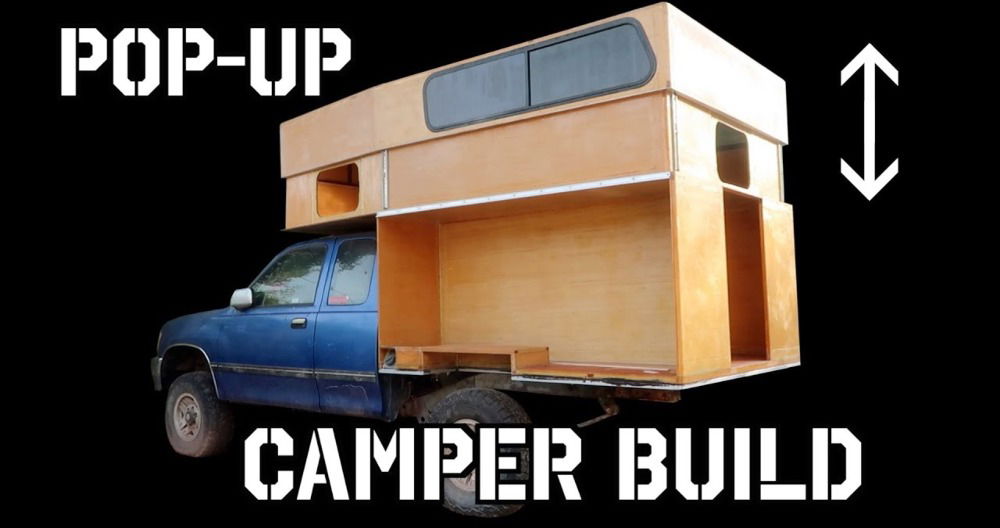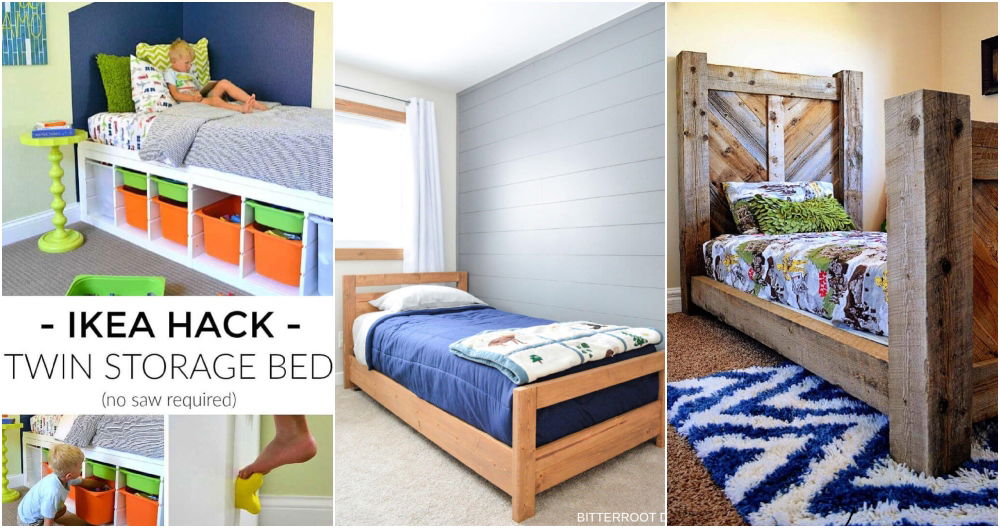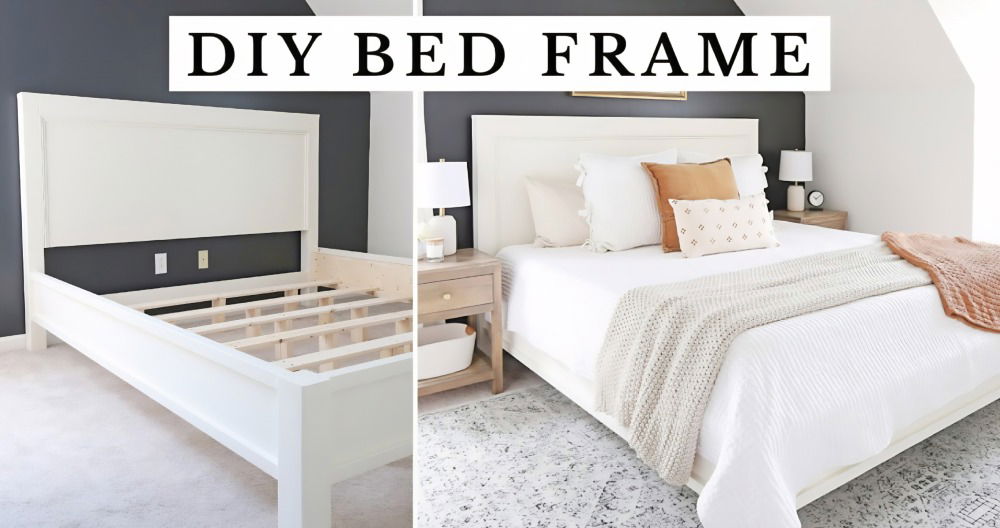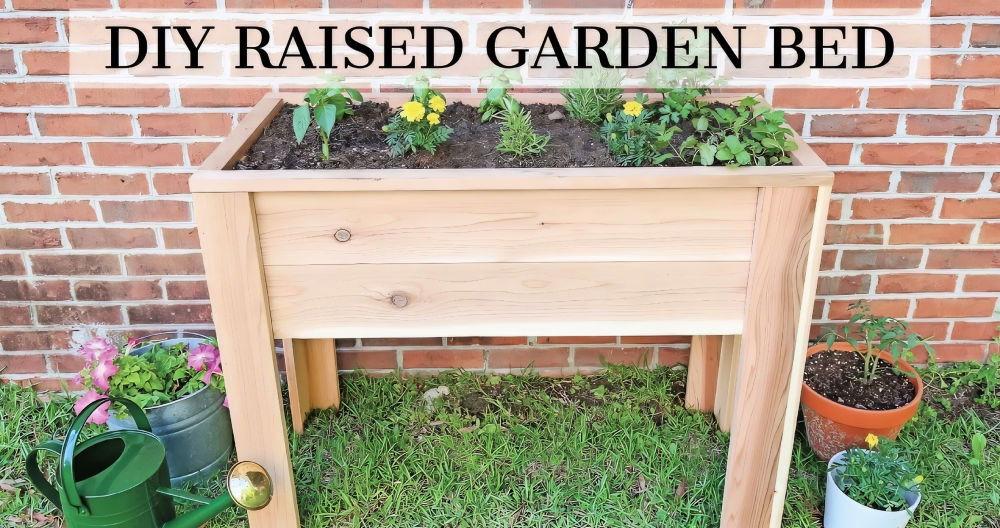Making a DIY truck bed tent can be a fun and rewarding project. This guide will show you how to build your own truck bed tent easily and affordably. You'll need some basic materials and tools, such as tarps, bungee cords, and sturdy poles. The process involves measuring your truck bed, securing the tent structure, and ensuring it's weatherproof.
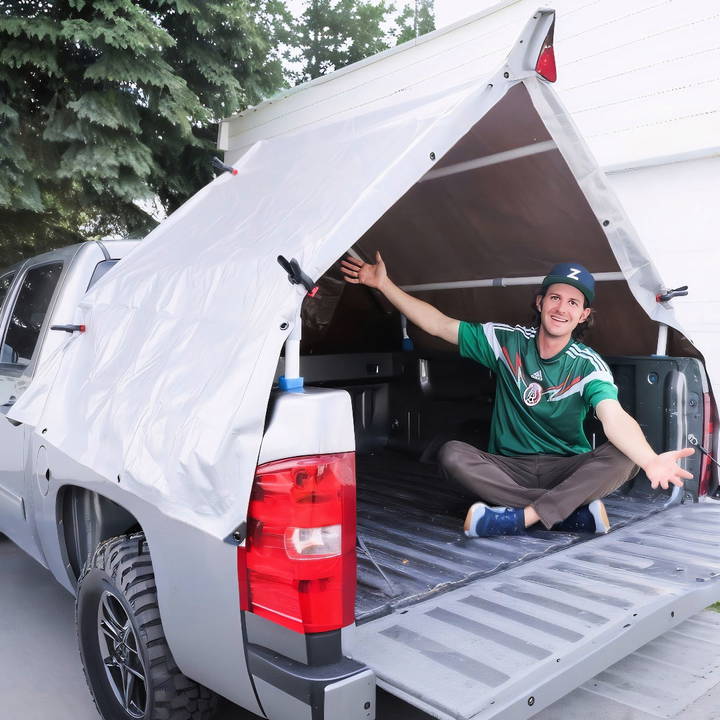
Having a truck bed tent opens up new possibilities for camping trips and adventures. It's convenient, comfortable, and saves you money compared to buying a pre-made tent. Plus, you can customize it to fit your needs perfectly.
Ready to start building your own DIY truck bed tent? Let's explore the steps in the next section.
Materials Needed and Why
Before we dive in, let's go over the materials you'll need:
- Four 10-foot long PVC pipes (1-inch diameter): These will form the main structure of the tent.
- Various fittings (T-fittings, 90-degree angles, 45-degree elbows): These will connect and stabilize the PVC pipes.
- A pool noodle: This is crucial for reducing noise and adding stability to the structure.
- A tarp (9x12 feet): This serves as the tent cover to keep you dry and shielded from the elements.
- Clamps: These will secure the tarp to the truck bed.
- A saw or PVC cutter: Necessary for cutting the PVC pipes to the desired lengths.
Each of these materials plays a vital role in ensuring the tent is sturdy, weatherproof, and easy to assemble and disassemble.
Step by Step Instructions
Learn how to build your own DIY truck tent with our step-by-step instructions. Perfect your adventure setup with easy steps for a sturdy, comfortable tent.
Step 1: Measuring and Cutting the PVC Pipes
First things first, measure and cut your PVC pipes:
- Cut Four 1-foot pieces: These will be the legs that fit into the holes on the sides of the truck bed.
- Cut Four 3-foot pieces: These pieces will form the sides of the A-frame.
Tip: Use a saw or PVC cutter for clean, precise cuts.
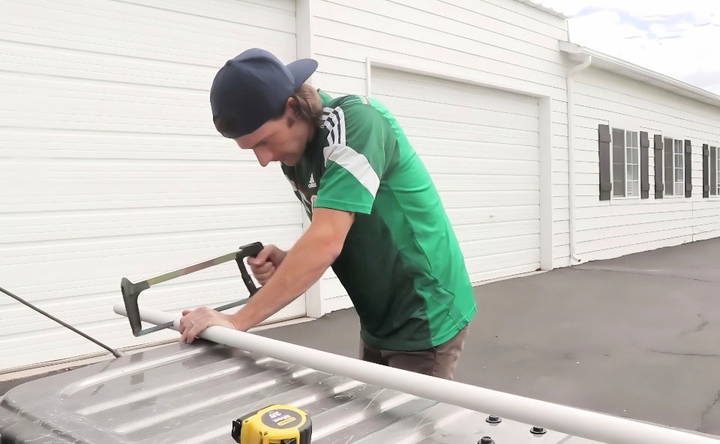
Step 2: Assembling the Legs and Base
Next, assemble the base:
- Attach a 45-degree elbow to each of the 1-foot pieces.
- Use T-connectors to attach these to longer sections of PVC, forming the base of the A-frame.
This will be the foundation of your tent and provide stability to the structure.
Step 3: Making the A-Frame
Now, let's build the A-frame:
- Connect the 3-foot pieces using 90-degree angles to form the triangular sides of the tent.
- For added stability, connect the top parts of the A-frame with another piece of PVC using T-connectors.
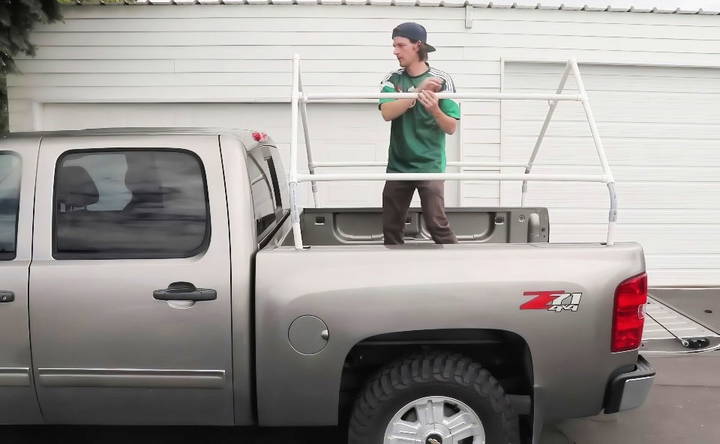
Step 4: Enhancing Stability with the Pool Noodle
Here comes the game-changing step:
- Cut the pool noodle into sections that fit between the PVC pipes.
- Slit the pool noodle so that you can fit it around the PVC where it meets the truck bed.
Why the Pool Noodle?: The pool noodle reduces the noise caused by the PVC pipes moving against the truck bed and provides a tighter fit, minimizing movement and adding stability.
Step 5: Covering with the Tarp
Once the frame is set:
- Drape the tarp over the A-frame.
- Use clamps to secure the tarp to the truck bed. Make sure it's taut to prevent it from flapping in the wind.
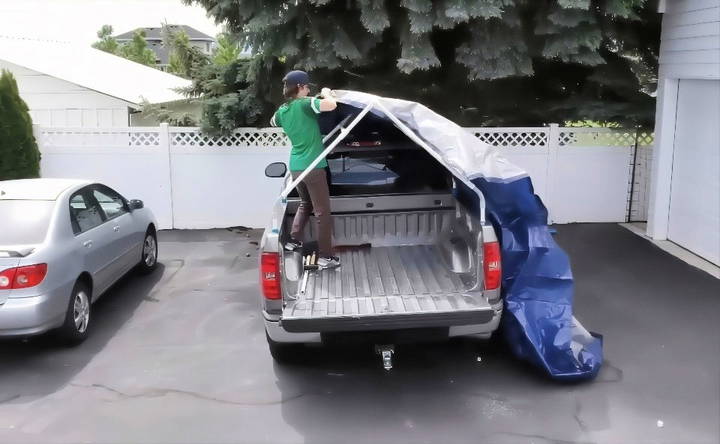
Step 6: Fine-Tuning and Adjustments
Finally, fine-tune the setup:
- Ensure all connections are snug and the frame is stable.
- Adjust the tarp to cover all sides effectively.
Step 7: Add Comfort
Now that your tent structure is ready, you can add a blow-up mattress and some fairy lights for added comfort and ambiance. You are now ready for truck bed camping!
Testing and Experience
The first time I tested my new truck bed tent, it held up remarkably well against the elements. It was comforting to know that the rain wouldn't seep through the ground and I could stay dry and cozy. The pool noodle trick worked wonders in stabilizing the structure and reducing noise.
Valuable Insights:
- Compact Storage: The pieces of PVC are short enough to fit into a regular tent bag, making it easy to transport and store.
- Quick Assembly: Once you get the hang of it, assembling and disassembling the tent takes just a few minutes.
- Durability: The PVC and tarp withstand various weather conditions, ensuring you stay protected.
Customization Ideas for Your DIY Truck Tent
Making a DIY truck tent is not just about building a shelter; it's about tailoring it to your personal needs and preferences. Here are some customization ideas that can enhance your truck tent experience:
- Choose Your Fabric Wisely: Select materials that are durable and weather-resistant. A heavy-duty canvas is ideal for insulation and can withstand various weather conditions. For warmer climates, a lighter polyester fabric may provide better airflow.
- Add Mesh Windows: Incorporate mesh windows for ventilation and to keep insects out. These can be rolled up or down depending on the weather and your privacy needs.
- Consider Storage Solutions: Maximize space by adding pockets or hanging organizers inside your tent. This can help keep your gear organized and easily accessible.
- Insulate for Comfort: For cooler temperatures, line the interior with insulating materials such as foam padding or reflective blankets. This will help retain heat and make your tent cozy.
- Create a Modular Design: Design your tent with modular sections that can be added or removed. This allows for flexibility if you need more space or want to lighten your load.
- Think About Lighting: Install battery-powered LED lights or bring portable lanterns to illuminate your tent at night. Consider solar-powered options for a more sustainable choice.
- Personalize with Color: Choose colors or patterns that reflect your style. You can even use fabric paint to add designs or markings to your tent.
- Build an Awning: Construct an awning using additional poles and fabric. This extends your living space and provides shade and protection from the rain.
- Add a Groundsheet: Place a durable groundsheet under your tent to protect against moisture and add an extra layer of insulation.
- Safety First: Ensure all modifications are secure and won't compromise the structural integrity of your tent. Regularly check for wear and tear and make repairs as needed.
By considering these customization ideas, you can build a truck tent that not only serves as a functional shelter but also reflects your camping style and needs.
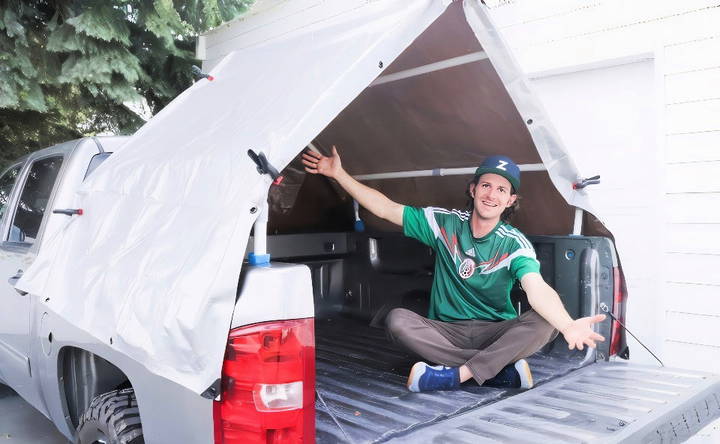
FAQs About DIY Truck Tent
Discover the ultimate FAQs about DIY truck tent setups! Learn expert tips, materials, and steps to build your perfect outdoor adventure shelter.
A DIY truck tent is a custom-built tent designed to fit the bed of your pickup truck, providing a comfortable and secure sleeping area off the ground. It’s a great option for campers looking for a budget-friendly alternative to commercial truck tents, offering the flexibility to tailor the design to specific needs and preferences.
Yes, many DIY truck tent designs are made with beginners in mind. They often use simple materials like PVC pipes and tarps that don’t require specialized tools or skills. Instructions for these tents are usually straightforward, ensuring that even those with little to no DIY experience can successfully create a functional truck tent.
To make your DIY truck tent weather-resistant, ensure all seams are sealed properly if you’re sewing the fabric. Use a waterproof tarp as an outer layer to protect against rain. Consider adding a layer of insulation if you’ll be camping in colder weather. Always test your tent’s weather resistance in a controlled environment before heading out on a trip.
Yes, DIY truck tent designs can vary depending on the model and size of your truck. Some designs are better suited for larger trucks with more bed space, while others can be adapted for smaller models. It's important to measure your truck bed and choose a design that accommodates its specific dimensions and shape.
Customizing your DIY truck tent with storage options can greatly enhance its functionality. Consider building integrated drawers or shelves within the frame of your truck bed. Using materials like plywood, you can build compartments for storing camping gear and personal items. Adding pockets made from fabric on the inside of the tent walls is another practical way to keep smaller items organized and within reach.
Conclusion
Building a DIY truck bed tent is an affordable and effective way to enhance your camping experience. By following these steps and utilizing the materials mentioned, you can tackle the challenge of wet and uncomfortable ground camping. Not only does this DIY project provide shelter, but it also ensures that you're ready for any adventure. Give it a try, and let me know how it turns out for you!


